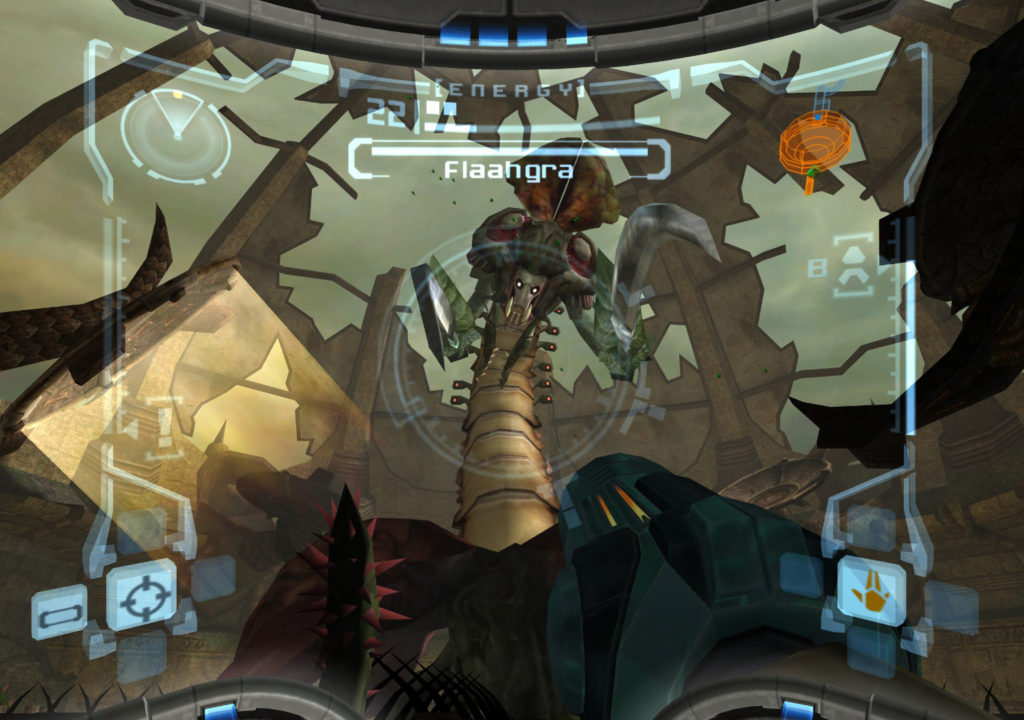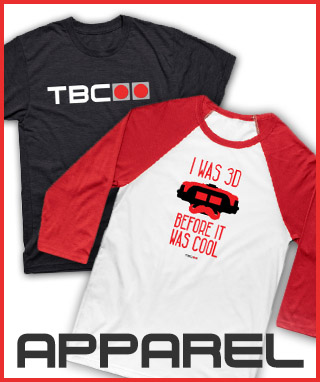I’ve mentioned it before, but here in the last year or two I’ve started frequenting used game stores. I’m not entirely sure why, but there’s something about stumbling across an old classic or hidden gem that I never got to experience when it first came out that I find immensely satisfying. And let’s not forget the warm and fuzzy feeling of getting said games for a good price!
One such game is Capcom’s Viewtiful Joe, an ultra-stylish, side-scrolling beat-em-up for the GameCube. I enjoyed it quite a bit, though I think it was probably for the best that I waited until I was an adult to play it. It’s fobbing hard! That said, it’s an enjoyable kind of hard: it gives you a myriad of over-powered abilities but only hints at the best way to use any of them. It takes almost the entire game to figure out how and when to use each of your powers, which makes you feel all the more accomplished once you do. This game’s a good example of being tough but fair…except when it comes to the boss battles, those just plain suck.
What’s in a Boss Battle?
Before I can harp on Viewtiful Joe’s boss battles, we need to know what a good boss battle looks like. Let’s get the big one out of the way first: bosses are not “big enemies”. Despite both being obstacles that are typically overcome through combat, bosses and enemies serve completely different purposes. Enemies are minor but versatile obstacles. Their mechanical advantage is that they can easily be transplanted into different scenarios and thrown at the player in different combinations. This means interesting challenges can be formulated with different combinations of enemies and level designs. In essence, enemies by themselves are more akin to ingredients than a meal. While arena design and the possible presence of lesser foes are factors worth considering when discussing boss design, the fact remains that those factors are a part of the boss fight. In that sense, a boss battle is like a complete dish, which uses various gameplay elements to give it a unique flavor.
Bosses are not “big enemies”.
To that end, boss fights are more like stages or puzzles. What I mean is that bosses adhere to many of the same design principles: they should introduce a concept or set of concepts and build on them in interesting and unique ways. Koichi Hayashida, the director of Super Mario 3D World, is famous for his four-part level design philosophy. Every stage has a clear concept which is first introduced in a safe environment, then the stakes are raised, after which comes a twist or extrapolation of the idea that requires the player to think about the mechanic in a new way, all before the stage concludes thus providing a resolution. Similarly, good bosses introduce ideas (usually a collection of attacks and vulnerabilities) that start off relatively simple so that the player can get the hang of them, then develop those ideas by adding variations, increasing the difficulty, or even injecting new concepts mid-battle.
For the sake of illustration, imagine a Zelda dungeon that was the exact same challenge repeated four or five times: you walk into a room with a pot next to a button, you put the pot on the button, and then you move on to the next room. No change, no variation, it’s literally the exact same puzzle four or five times in a row. Unless the punchline is a character in-universe built the dungeon that way because he thought the puzzle was so clever that he didn’t realize a puzzle’s only challenging the first time (which, come to think of it, would be a great set-piece), that would be a horrendous dungeon.

This is why bosses have multiple phases. If the boss was the same all throughout, it would quickly feel repetitive. This could also lead to the boss feeling like a damage sponge: if the boss doesn’t alter its attacks or tactics, then it starts to feel like it isn’t really responding to the player, thus robbing the player of a tangible sense of context for his or her actions…like Viewtiful Joe does.
Henshin-a-why? WHY?!
So you know that analogy I made with the pot? Yeah, that’s basically how Viewtiful Joe handles its boss fights. With the occasional exception of a brief warm-up phase for some of the bosses (where the boss only uses part of its move list until you hit it), bosses don’t change at all throughout the fight. This becomes especially noticeable during the boss rush in the penultimate world, as you’ll be fighting each of the bosses over and over. To make matters worse, each boss fight is long. Viewtiful Joe’s bosses can have up to five or six health bars, with each health bar being at least two cycles of the boss’s pattern. To put it in perspective, there were fights after which I couldn’t uncurl my fingers all the way because I had been gripping my controller so hard and for so long.
Viewtiful Joe’s bosses can have up to five or six health bars.
This produces a vicious cycle. The point where another game would either end the fight or change up the boss’s attack patterns is merely the halfway point in Viewtiful Joe. This makes each fight a protracted slog which wears on the player’s patience. The player gets bored of the repetitive nature of the fight which in turn leads to frustration which in turn leads to mental fatigue, thus making the fight that much harder. There were several fights where I realized that I knew the pattern, and I knew how to avoid each attack, but the fight lasted so long that I either lost to the law of averages or merely ran out of the mental stamina needed to continue to focus on such demanding task. It wasn’t a test of skill, it was a test of fortitude. As you can imagine, that feels incredibly cheap.
And remember, assuming you’re not playing on “Kid Mode”, you’re probably going to be fighting that same boss, with its same, unwavering move list, anywhere between 8-15+ times before you get it right (that’s not hyperbole). That gets old after awhile.
And then if you get a game over during the boss rush you have to do the whole thing all over again.

Conclusion
Like I said, I still like Viewtiful Joe, but after all of the pain (actual, physical pain!) its boss battles put me through, I’m not sure I want to bother with its sequel…or at least anything other than “kid mode”.
Oh, before I wrap this up, I would be remiss if I didn’t mention some caveats. There are times when a static boss pattern is acceptable, namely short battles. Platformers, whose bread and butter are interesting stages and not combat, tend to get away with this: Mario and his three-strikes-and- they’re-out bosses, and the classic Sonic the Hedgehog Robotnik fights, just to name a couple. Like I hinted at earlier, if Viewtiful Joe had just halved the length of many of its fights, those bosses wouldn’t have been so frustrating. Heck, they may have even been fun!
Remember, a good game doesn’t present a challenge, it presents an interesting challenge.




